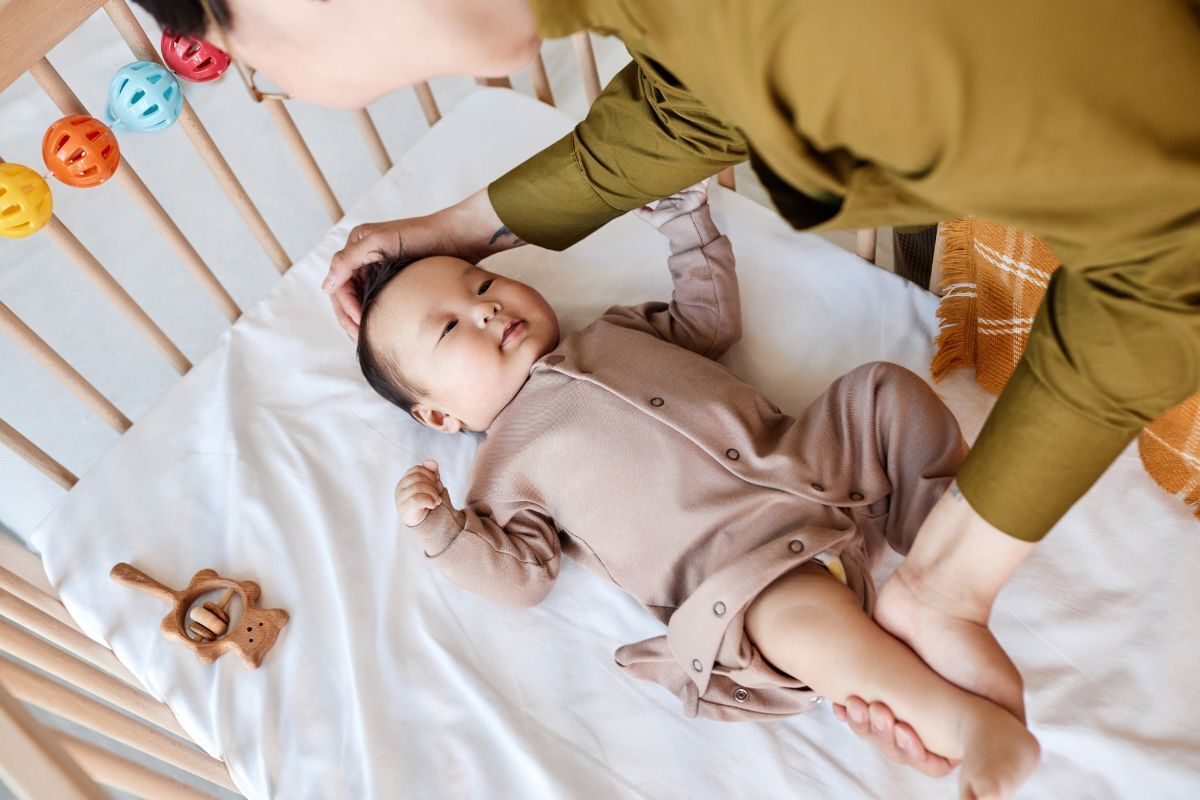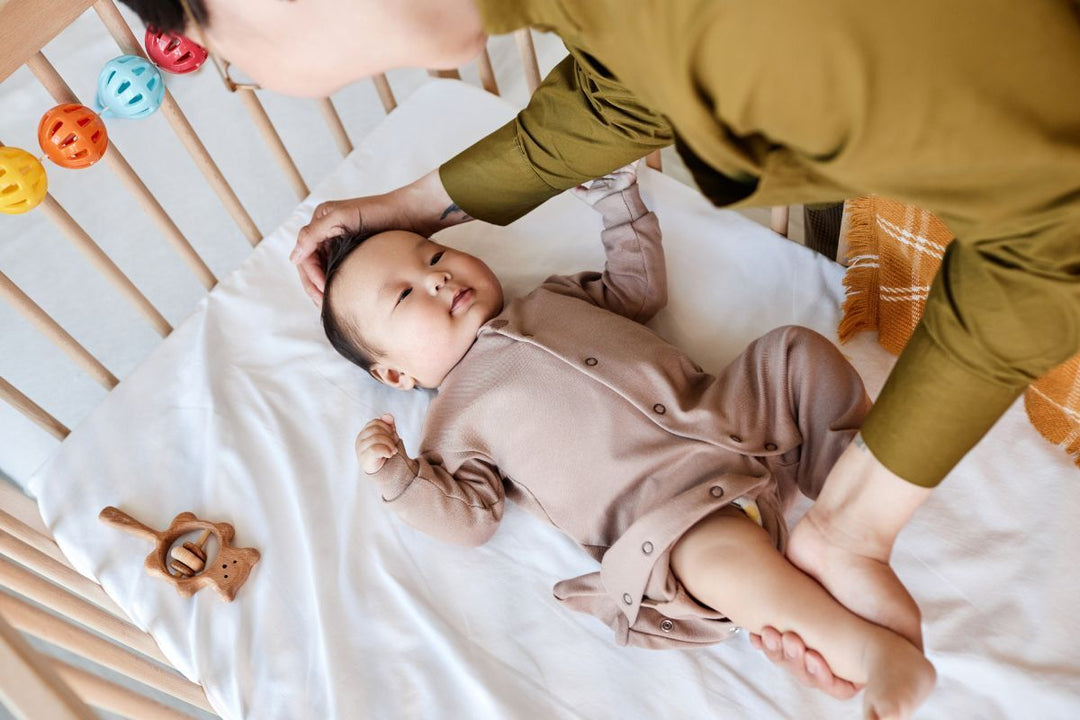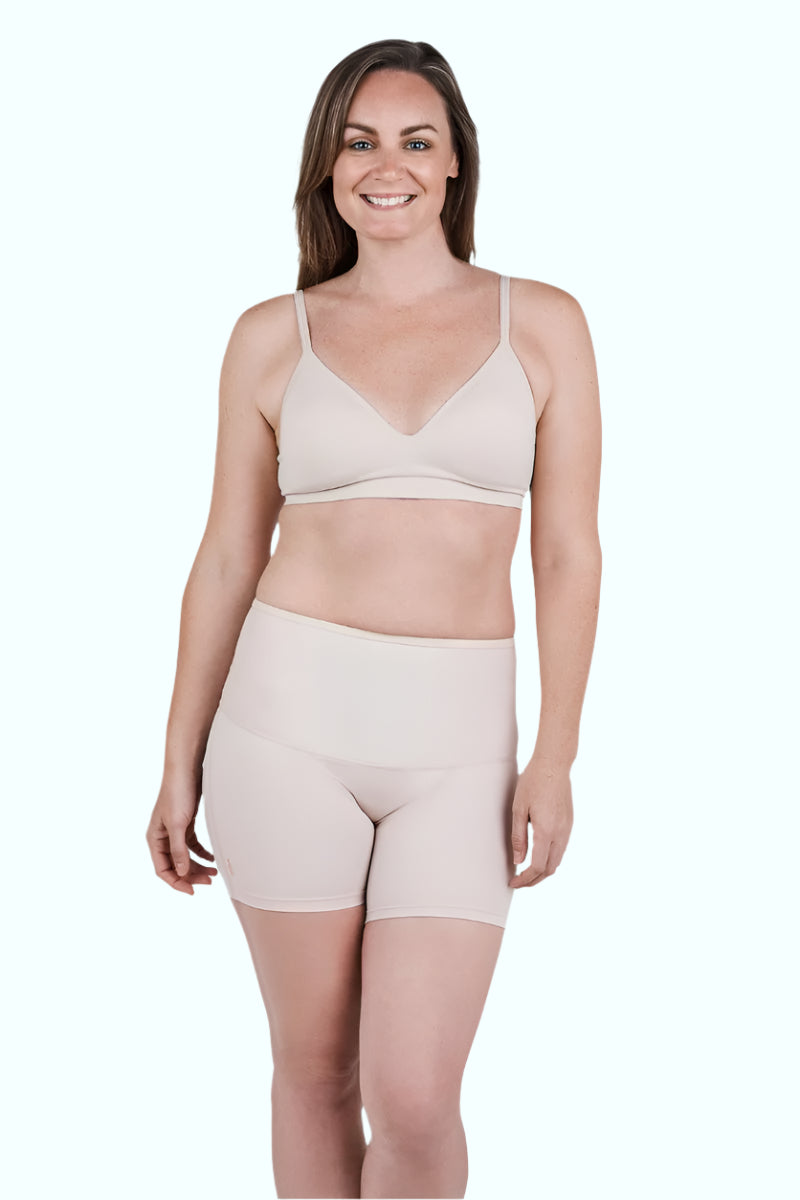If you’ve ever heard “sleep when the baby sleeps” and laughed, you’re in good company. In the first 12 weeks, newborn sleep is a bit like a mystery novel: unpredictable, full of twists, and occasionally heart-stopping at 3 AM. But once you understand what’s normal, you can stop worrying about the “perfect” schedule and start reading the signals your baby is sending with confidence.
How Long Should a Newborn Sleep in 24 Hours?
Adults sleep in one big stretch, ideally 7 to 8 hours of uninterrupted bliss. Newborns have other plans. They can sleep for up to 18 hours every 24 hours, but this occurs in short bursts of two- to four-hour naps scattered throughout the day.
Their body clock hasn’t yet learned the difference between day and night. Feeding, warmth, and comfort are their main priorities. By about 6 months, babies start stringing those short naps together, averaging roughly 13 hours of total sleep. [1]
What Does a Newborn’s Sleep Pattern Look Like in the First Weeks?
In the first few months, newborn sleep patterns alternate between two main stages:
-
Active sleep (REM): twitchy eyes, tiny grunts, sudden smiles. Their brain are busy learning and growing.
-
Quiet sleep (NREM): slow breathing, still limbs, deep rest. This is when growth hormones do their work.
A newborn’s full sleep cycle lasts only 40–50 minutes, compared with 90 minutes for adults. [2] That’s why they stir, squirm, or call out just when you’ve finally poured a cup of tea. These mini-wakeups are normal. Your baby isn’t “bad at sleeping,” they’re just cycling through stages.
Around three months, sleep starts to mature, with longer cycles and more distinct stages. Until then, consider short naps and frequent nighttime wakings as part of the natural newborn sleep routine.
What Are a Newborn’s Alert States?
Babies don’t come with an instruction manual, but their alert states come close. These natural shifts show you what they need, from calm wake time to deep sleep.
|
State of Alertness |
Description |
What Helps |
|---|---|---|
|
Deep Sleep |
Still, slow breathing |
Let them rest |
|
Light Sleep |
Twitching, eye movement |
Leave them be unless they wake fully |
| Drowsy | Half-open eyes, slow motion | Prepare for sleep; dim lights |
| Quiet Alert | Calm and focused | Ideal time to feed or chat |
| Active Alert | Wiggly, vocal, fussy | Wind things down |
| Crying | Red face, loud cries | Comfort, feed, change, cuddle |
Adapted from the Centre for Perinatal Psychology
Recognising these states means fewer battles and more “a-ha” moments. You’ll start catching the sleepy cues before overtiredness hits.
Why Do Babies Wake Up So Often at Night in the Newborn Phase?
Because they’re meant to. Newborns haven’t developed circadian rhythms, so day and night mean nothing yet. They wake for all the right reasons: hunger, discomfort, temperature changes, or simply because they need a cuddle. Their tiny stomachs can only hold enough milk for a few hours, so frequent waking is a biological necessity, not a bad habit.
Remember, they’re not intentionally trying to keep you up; they’re just trying to survive.
What is a Newborn’s Sleep Routine, and When Should You Start One?
A newborn sleep routine isn’t about the clock; it’s about rhythm and repetition. Think sequence, not schedule:
Feed → brief play or cuddle → sleep.
Over time, this predictable flow teaches your baby what’s coming next. When you spot early signs of tiredness (slower movements, staring off, rubbing eyes), it’s time to settle. By 2 or 3 months, you can gently guide naps with light cues like dimming the room or playing soft white noise.
What Sleeping Positions Are Best for a Newborn?
The safest sleep position is on their back, on a firm, flat surface with no loose bedding or toys. Research shows that tummy-sleeping dramatically increases the risk of sudden infant death syndrome (SIDS) [4].
Always place your baby’s feet near the end of the cot or bassinet so they can’t slide under the covers. Back-sleeping may sound simple, but it’s the single biggest factor in safer sleep.
What Are the Signs Your Baby is Ready for Sleep?
Newborns rarely drift off on command, but they do give us hints. Look for:
-
Rubbing eyes or ears
-
Yawning
-
Glazed stare or turning away
-
Fidgeting or fussing
-
Clenched fists
Catching these signals early makes bedtime smoother for both of you.
How Can You Help Your Baby Fall Asleep?
A few small tweaks can turn bedtime battles into calm wind-downs:
-
Keep the routine short and predictable: low lights, soft voices, same order each night.
-
Swaddle safely to prevent startle reflexes.
-
Try rhythmic patting or gentle rocking.
-
Offer a feed if hungry, but avoid overstimulation afterwards
-
Lay your baby down drowsy but awake once or twice daily to practise self-settling.
If you’re wondering how to get your newborn to sleep in a bassinet, start with familiar cues, a soft wrap, dim light, and your scent nearby. Some babies need gentle patting or shushing as they get used to flat sleeping after nine months curled in a womb.
Can a Newborn Sleep on Their Side
No. Side sleeping is risky because babies can easily roll onto their stomachs, increasing the chance of SIDS. Always place your baby on their back for every sleep and keep the surface firm and uncluttered. [4]
Do Newborns Have Sleep Regressions?
Yes, though they’re shorter and sneakier than toddler ones. Something else you can look forward to! A newborn sleep regression might show up during growth spurts or developmental leaps. Suddenly, your once-peaceful sleeper is wide-awake and hungry at 2 AM. These phases usually last a few days to a week. Stick with your routine, offer extra cuddles, and ride it out. “Normality” will return.
Is Sleep Training Suitable for Newborns?
Not yet. According to the Australian Breastfeeding Association, formal newborn sleep training isn’t appropriate in the first 12 months [5]. Newborns still require frequent feedings and reassurance to establish a healthy attachment and promote growth. Instead, focus on gentle patterns: consistent bedtime cues, responsive soothing, and plenty of skin-to-skin contact. Structure comes later; security starts now.
What Does a Safe Newborn Sleep Environment Look Like?
Safety first, always. A healthy sleep setup includes:
-
Back-sleeping in a cot or bassinet beside your bed for the first six months
-
A firm, flat mattress with a fitted sheet
-
No pillows, bumpers, or soft toys
Room temperature around 20–22 °C (68 to 71.6 °F) with light, breathable bedding -
A smoke-free environment
Baby monitors can offer reassurance, but they don’t replace safe sleep practices. For premature or high-risk babies, your paediatrician may recommend clinical-grade monitoring.
How to Balance Self-Care and Caring for Your Newborn
In the blur of feeds and nappy changes, your own rest can vanish. But your well-being matters just as much. Sleep deprivation, hormonal changes, and stress all affect how you cope. [6]
Nap when your baby naps, share night duties if possible, and accept every offer of help. Small resets, a short walk, a shower that lasts longer than three minutes, a proper meal, all count as self-care. If you’re running on fumes, reach out to your GP or midwife. Early support protects both you and your baby.
Joining a group of other new parents can be especially helpful, as it provides support and the knowledge that you are not alone.
When to Call Your Paediatrician
Trust your instincts. Seek medical advice if your baby:
-
Struggles to gain weight or feed
-
Has trouble breathing or pauses longer than 10 seconds
-
Looks blue around the lips or face
-
Cries inconsolably for hours
-
Seems limp, unresponsive, or unusually sleepy
Remember, most consumer monitors track movement or temperature only; they can’t prevent or detect illness. For medically fragile babies, rely on professional-grade monitoring as recommended.
Trust Your Baby’s Unique Sleep Rhythm
There’s no one-size-fits-all newborn sleep routine. Every baby has a rhythm of their own. Some nap easily, others need the full lullaby-and-cuddle combo. What matters most is consistency, safety, and giving yourself grace.
The sleepless nights won’t last forever. One day, you’ll realise your baby slept five hours straight, and you woke up to check if they were okay. That’s progress.
FAQs
1. What are the hardest weeks with a newborn?
Weeks 2 to 6 often feel the toughest. Feeding is constant, nights are unpredictable, and sleep deprivation peaks. Things usually smooth out by 3 months as patterns emerge.
2. What is the 5-3-3 rule for babies?
It’s a loose rhythm some parents use: roughly 5 hours awake, 3 hours nap, another 3 hours nap. It’s a guideline, not gospel. Follow your baby’s cues first.
3. How long should newborn naps be?
Anywhere from 30 minutes to two hours. Their short sleep cycles make brief naps completely normal.
4. What are the signs of infant sleep problems?
Consistent difficulty settling, noisy breathing, or very short sleep blocks can signal issues. If concerned, check with your GP.
5. Is it normal for newborns to have short naps?
Absolutely. Their sleep cycles are short and developing, waking often is just part of the process.
6. How often should a newborn wake to feed at night?
Usually every two to four hours. Frequent waking helps regulate milk supply and ensures healthy growth.
References:
-
Raising Children Network – Newborn Sleep: How Much & When: https://raisingchildren.net.au/newborns/sleep/understanding-sleep/newborn-sleep
-
Sleep Foundation – Baby Sleep Cycles Explained: https://www.sleepfoundation.org/baby-sleep/baby-sleep-cycle
-
Centre for Perinatal Psychology – States of Alertness: https://www.centreforperinatalpsychology.com.au/states-of-alertness/
-
National Library of Medicine – Sleeping Position and Risk of SIDS: https://pmc.ncbi.nlm.nih.gov/articles/PMC80831/
-
Australian Breastfeeding Association – Sleep Training: https://www.breastfeeding.asn.au/resources/sleep-training
-
HealthyWA – Sleep 0–3 Months: https://www.healthywa.wa.gov.au/Articles/S_T/Sleep-0-3-months













